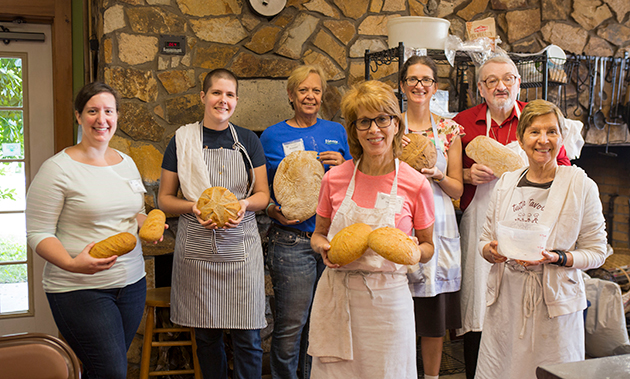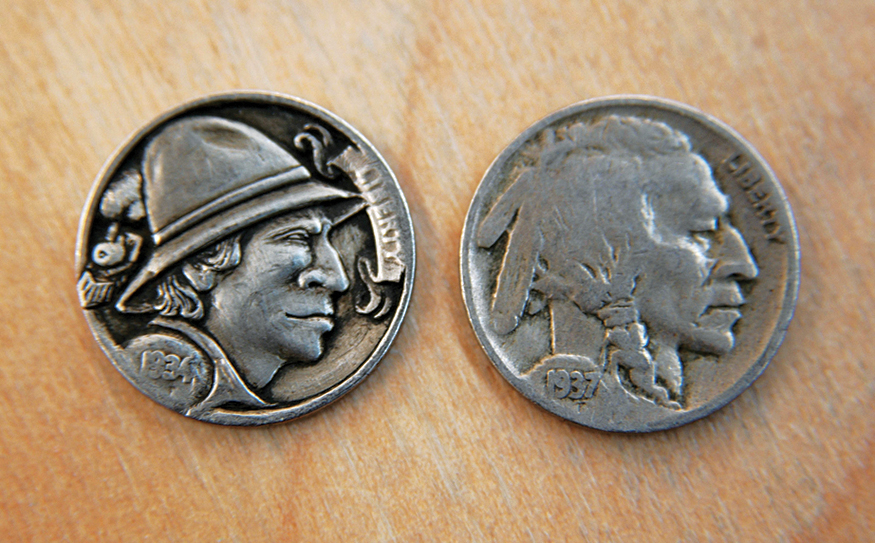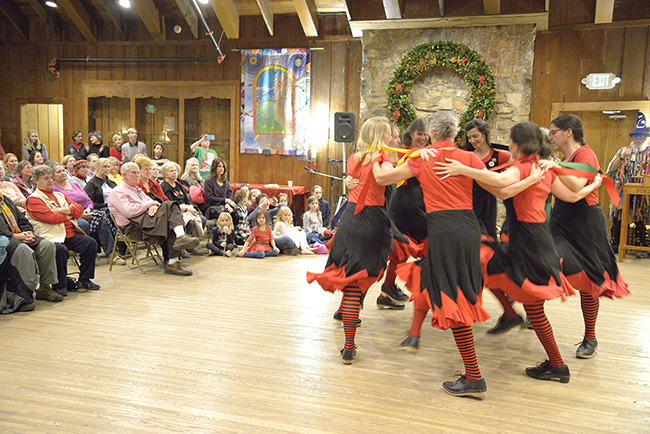
Stories
11 Jul Sienna’s First Class: Enameling
Posted at 15:38h
in Stories: Enameling, Stories: Glass, Stories: Metalwork, Student Voices, Youth 0 Comments
[caption id="attachment_17140" align="aligncenter" width="630"]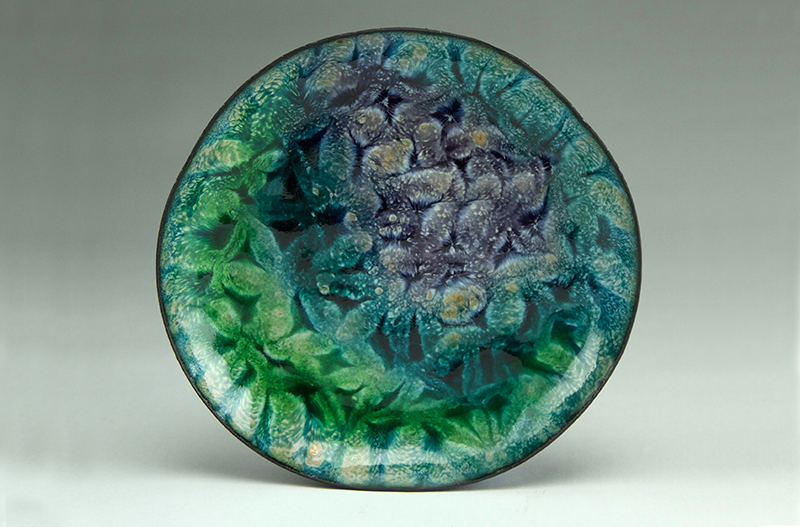 Enameled Bowl by Sienna[/caption]
The summertime at the Folk School offers two opportunities for people under the age of 18 to take classes at the Folk School: Little/Middle Folk School and Intergenerational Week. For many young people, this is an ongoing tradition, so what happens when you turn 18 and age out of these programs? Do not fret, you are not banished from the Folk School! On the contrary, now you can take ANY class all year long.
I recently met Sienna Bosch, an 18-year-old recent high school graduate from Fort Collins, CO who was taking "Beginning Techniques in Enamel" with Christie Schuster. She was here with her mom, who was in printmaking class, and her dad, who taught woodturning. I sat down with her and talked about her experience. Enjoy our interview!
[caption id="attachment_17139" align="alignright" width="278"]
Enameled Bowl by Sienna[/caption]
The summertime at the Folk School offers two opportunities for people under the age of 18 to take classes at the Folk School: Little/Middle Folk School and Intergenerational Week. For many young people, this is an ongoing tradition, so what happens when you turn 18 and age out of these programs? Do not fret, you are not banished from the Folk School! On the contrary, now you can take ANY class all year long.
I recently met Sienna Bosch, an 18-year-old recent high school graduate from Fort Collins, CO who was taking "Beginning Techniques in Enamel" with Christie Schuster. She was here with her mom, who was in printmaking class, and her dad, who taught woodturning. I sat down with her and talked about her experience. Enjoy our interview!
[caption id="attachment_17139" align="alignright" width="278"]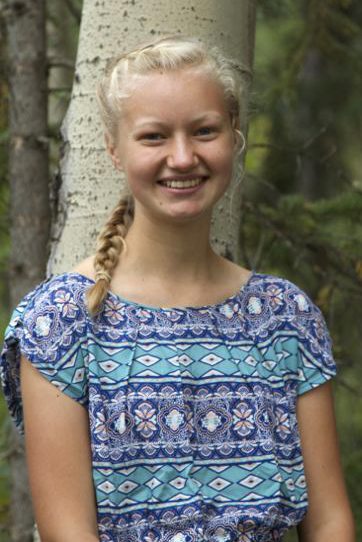 Sienna Bosch[/caption]
Sienna Bosch[/caption]
CP: Had you been to the Folk School before this trip?
SB: I had never been to the Folk School before this trip. I had heard a lot about it from my sister and parents, but this was my first time at the Folk School. CP: Do you have a favorite craft? SB: I don't necessarily have a favorite, I work mostly in wood, metal, and wire, but I really enjoy trying new things and experimenting with a variety of crafts. [caption id="attachment_17137" align="alignleft" width="300"]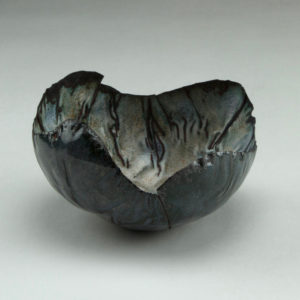 Enameled Bowl by Sienna[/caption]
CP: Why did you decide to take Enameling?
SB: I decided to take enameling because it was something that I had never tried before, but was interested in. I had seen pictures of enameled copper and was curious what the process was like. There were many classes that sounded interesting to me, but enameling really sparked my interest.
Enameled Bowl by Sienna[/caption]
CP: Why did you decide to take Enameling?
SB: I decided to take enameling because it was something that I had never tried before, but was interested in. I had seen pictures of enameled copper and was curious what the process was like. There were many classes that sounded interesting to me, but enameling really sparked my interest.
03 Jul Last Blooms of the Tina James Magic Primrose
[caption id="attachment_16959" align="aligncenter" width="630"]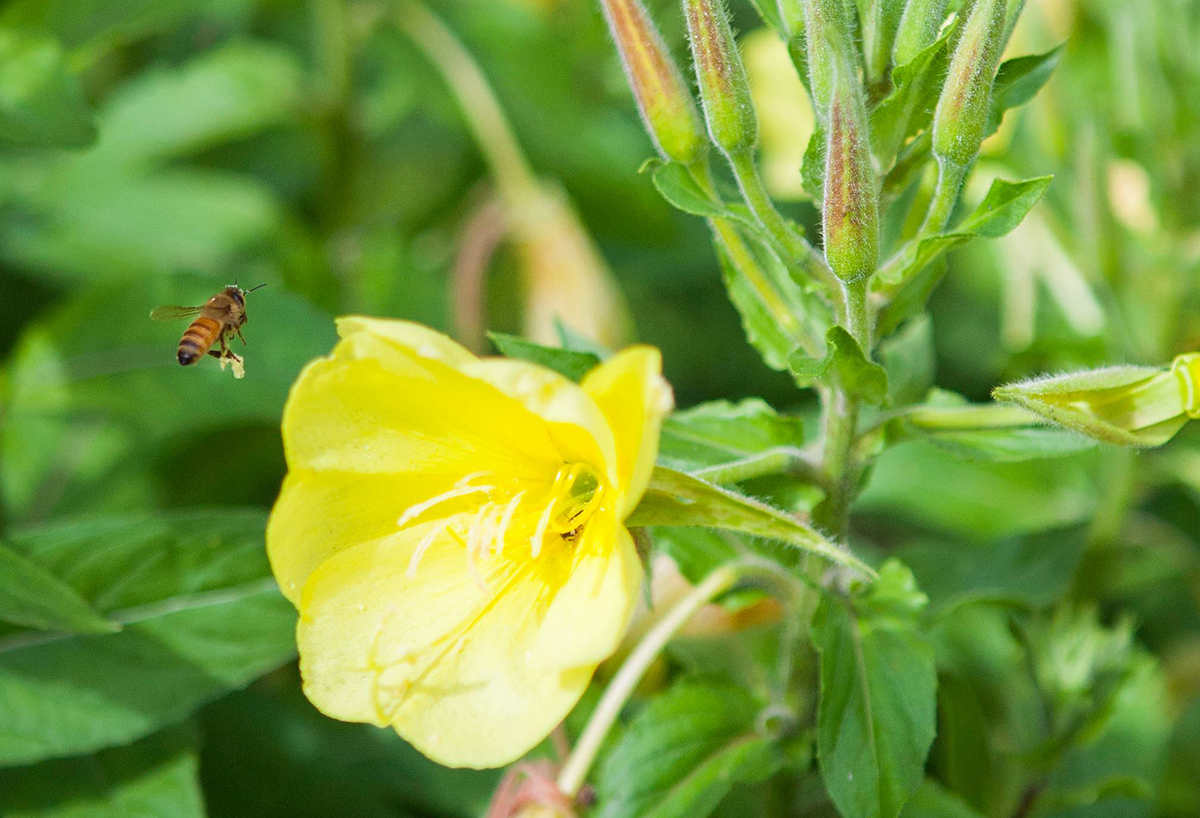 The morning after the bloom, a bee visits the Tina James Magic Primrose.[/caption]
[caption id="attachment_16955" align="alignright" width="333"]
The morning after the bloom, a bee visits the Tina James Magic Primrose.[/caption]
[caption id="attachment_16955" align="alignright" width="333"] The fresh Evening Primrose blooms at dusk[/caption]
Our Tina James Magic Primrose plants have been putting on quite a show for the past few weeks at dusk in the Vegetable Garden and behind the Painting Studio. The tightly wound yellow blooms dramatically open as night falls (around 9 p.m.). Before the show starts, visitors walk around the plant to see if they can guess which bloom will lead be the leading note of the overture. Excitement and anticipation is high and it is easy to feel giddy, like a little kid again.
The sepals (the green outside of the flower) peel down the flower and the tightly wound yellow trumpet begins to relax and open. Within seconds, before your very eyes, the blossom opens fully and settles into a large bright yellow flower with a delicate, sweet smell. It's is like watching time-elapsed photography in real time; it's just incredible. Each bloom only lasts through the night until mid-morning of the next day, attracting pollinators like bumble bees and butterflies during the morning and large humming bird-sized lunar moths at night.
The fresh Evening Primrose blooms at dusk[/caption]
Our Tina James Magic Primrose plants have been putting on quite a show for the past few weeks at dusk in the Vegetable Garden and behind the Painting Studio. The tightly wound yellow blooms dramatically open as night falls (around 9 p.m.). Before the show starts, visitors walk around the plant to see if they can guess which bloom will lead be the leading note of the overture. Excitement and anticipation is high and it is easy to feel giddy, like a little kid again.
The sepals (the green outside of the flower) peel down the flower and the tightly wound yellow trumpet begins to relax and open. Within seconds, before your very eyes, the blossom opens fully and settles into a large bright yellow flower with a delicate, sweet smell. It's is like watching time-elapsed photography in real time; it's just incredible. Each bloom only lasts through the night until mid-morning of the next day, attracting pollinators like bumble bees and butterflies during the morning and large humming bird-sized lunar moths at night.
20 Jun Life Lessons from a Week in Bread Class
...
01 Jun Letterpress Printmaking with Jessica White
Posted at 12:43h
in Instructor Voices, Stories: Book Arts, Stories: Paper Art, Stories: Printmaking 0 Comments
Next week is a special week for our Book & Paper Arts Program as our brand new beautiful studio opens its doors to students for the very first time. It's appropriate that the first class is a letterpress printing class considering that printmaking will flourish with the new space and room for equipment and presses. We talked with instructor Jessica White who is teaching the inaugural class about her craft and process. Enjoy our interview!
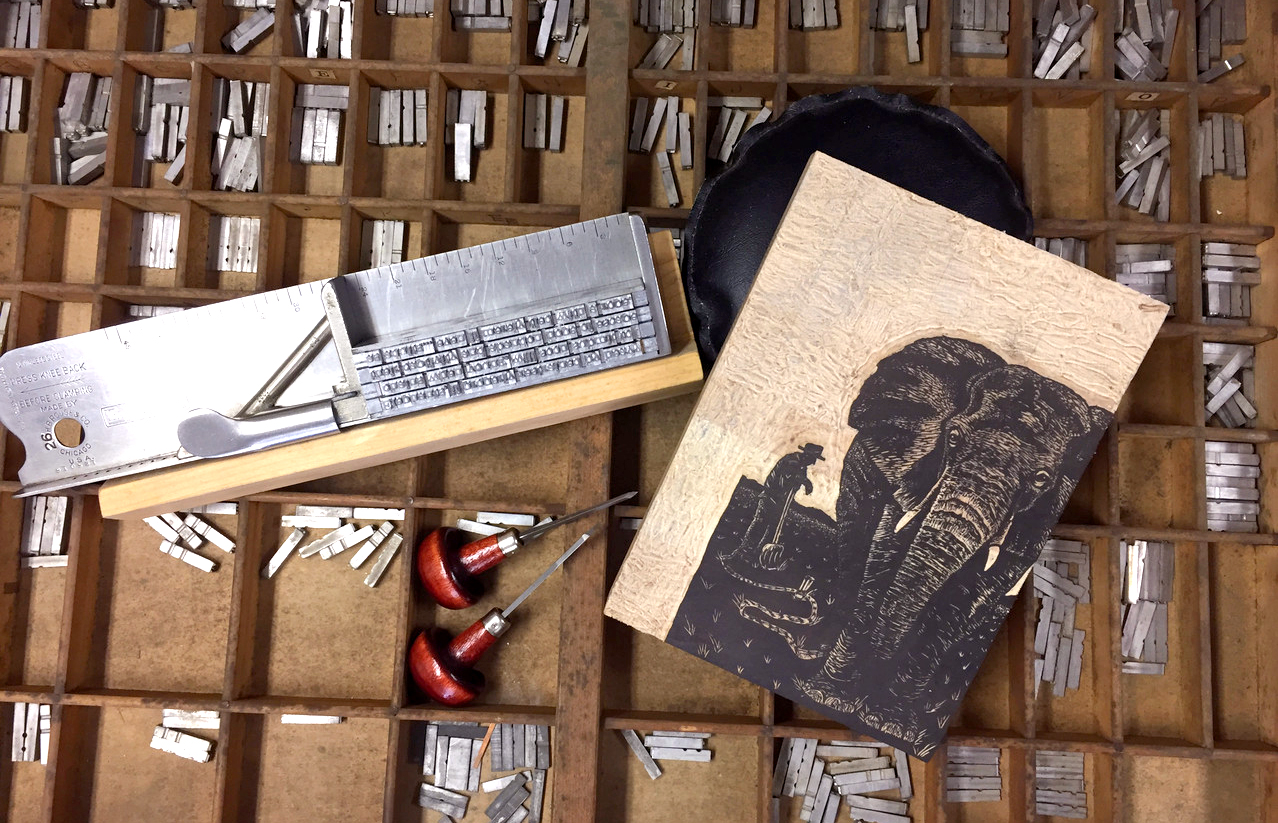
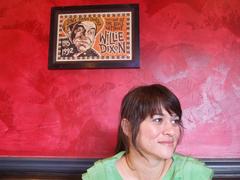 CP: Congratulations on being the very first instructor to teach class in our brand new Book and Paper Arts Studio! So what drew you letterpress printing? Why is the medium meaningful to you?
JW: When I was a printmaking grad student at the University of Iowa, I made drawings and prints that combined images with text. One day, a friend saw me struggle with different methods of printing the text on a lithograph, and he suggested letterpress. He showed me how to set and print one line of text, and I haven't stopped since!
For me, letterpress printing started as and still is a means to an end; I like all types of printmaking, but my love of text always brings me back to letterpress because it's the perfect method to printing my work.
CP: How would you describe your work?
JW: My work tends to be humorous and looks sweetly charming, but there is a philosophical and slightly dark side. I've been told that my work is "what you get if Beatrix Potter crashed into Edward Gorey."
[caption id="attachment_16857" align="aligncenter" width="630"]
CP: Congratulations on being the very first instructor to teach class in our brand new Book and Paper Arts Studio! So what drew you letterpress printing? Why is the medium meaningful to you?
JW: When I was a printmaking grad student at the University of Iowa, I made drawings and prints that combined images with text. One day, a friend saw me struggle with different methods of printing the text on a lithograph, and he suggested letterpress. He showed me how to set and print one line of text, and I haven't stopped since!
For me, letterpress printing started as and still is a means to an end; I like all types of printmaking, but my love of text always brings me back to letterpress because it's the perfect method to printing my work.
CP: How would you describe your work?
JW: My work tends to be humorous and looks sweetly charming, but there is a philosophical and slightly dark side. I've been told that my work is "what you get if Beatrix Potter crashed into Edward Gorey."
[caption id="attachment_16857" align="aligncenter" width="630"]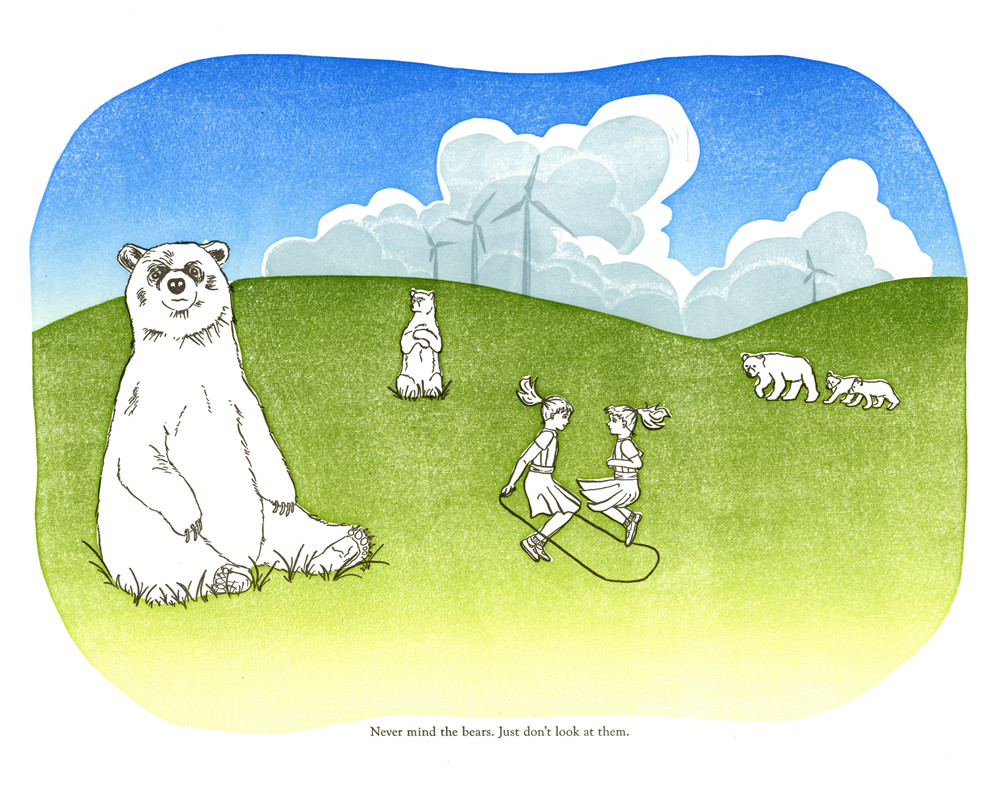 "Never Mind the Bears" letterpress print by Jessica White[/caption]
"Never Mind the Bears" letterpress print by Jessica White[/caption]
09 May 20 Years & 31 Quilts Later
...
13 Apr Double Rainbow Over the Folk School!
...
24 Feb The Magic of Paper Cutting with Ingrid Lavoie
Posted at 11:49h
in Instructor Voices, Stories: Book Arts, Stories: Painting, Stories: Paper Art 0 Comments
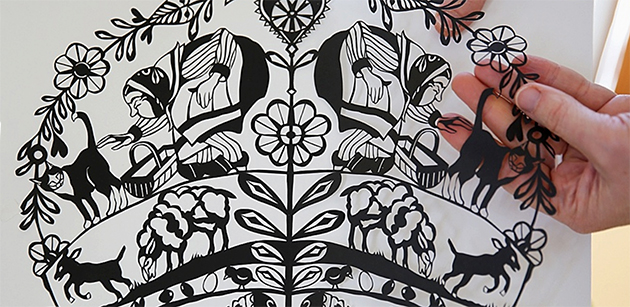 The intricate paper cuts of Ingrid Lavoie draw you into a fantastic world of whimsy, nature, and storytelling. She is a graduate of the Rhode Island School of Design (RISD) who fell in love with papercutting while on vacations visiting family in Denmark. Self-taught, she found her rhythm and style by using an X-Acto knife to "draw" images, instead of scissors. She enjoys unfolding a new work to reveal the paper's transformation, and has been teaching others this delightful art form for several years. Enjoy our interview!
The intricate paper cuts of Ingrid Lavoie draw you into a fantastic world of whimsy, nature, and storytelling. She is a graduate of the Rhode Island School of Design (RISD) who fell in love with papercutting while on vacations visiting family in Denmark. Self-taught, she found her rhythm and style by using an X-Acto knife to "draw" images, instead of scissors. She enjoys unfolding a new work to reveal the paper's transformation, and has been teaching others this delightful art form for several years. Enjoy our interview!
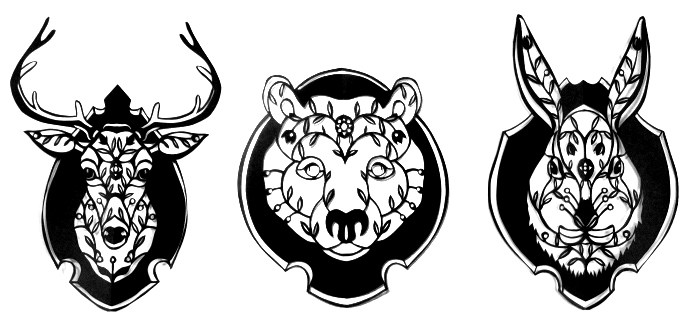
13 Jan What’s a Hobo Nickel?
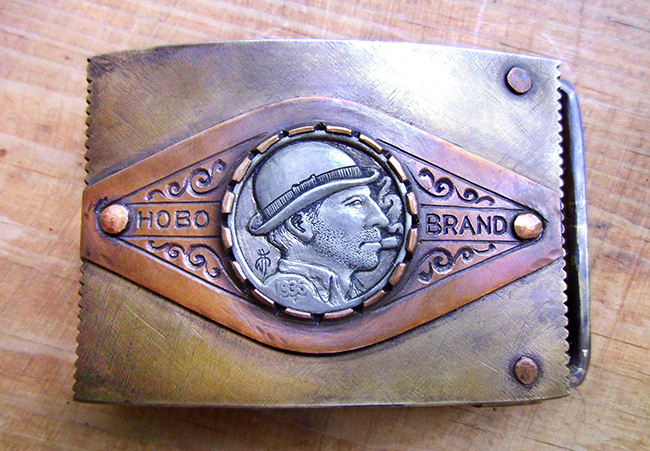 Tom Patterson has been a hand engraver and metalsmith for more than 50 years. Starting in his father's shop at age 14, he has been a lifelong student of metals and their manipulation. Currently, Tom continues his studies from his home studio in the mountains of western NC, where he fabricates artifacts of astonishing peculiarity. Unsure of what a hobo nickel is, I resisted the urge to google and decided to sit down with Tom and find out a bit more about the class. Enjoy our interview!
[caption id="attachment_16076" align="alignright" width="150"]
Tom Patterson has been a hand engraver and metalsmith for more than 50 years. Starting in his father's shop at age 14, he has been a lifelong student of metals and their manipulation. Currently, Tom continues his studies from his home studio in the mountains of western NC, where he fabricates artifacts of astonishing peculiarity. Unsure of what a hobo nickel is, I resisted the urge to google and decided to sit down with Tom and find out a bit more about the class. Enjoy our interview!
[caption id="attachment_16076" align="alignright" width="150"]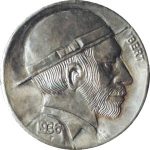 Hobo nickel by renowned original era carver Bertram "Bert" Wiegand[/caption]
CP: What is a hobo nickel?
TP: It’s a modified Indian Head Buffalo nickel and the profile of the Indian or the buffalo on either side has been modified to be something else. It was commonly used by hobos during the Great Depression to increase the value of a nickel. They could trade it for a ride, buy a meal, or buy off a train cop. People started liking hobo nickels and then coin collectors start to collect hobo nickels. Some of nickels created by carvers during the Depression Era became so valuable that modern people, who had some engraving ability, began to buy nickels from coin dealers to copy and counterfeit these original hobos. The counterfeit artist would get the big bucks for their “collectable” nickel. They were discovered, and instead of being discredited, they were celebrated and collected for their own abilities. So today, even though it is definitely a niche, there are a lot of hobo nickel carvers. One of the famous carvers, he had this little kit, or box, of his handmade tools, and it went to auction a few years back and it sold for $9000. The old original nickels are worth thousands of dollars now and some of the new nickels are worth a lot of money too.
Hobo nickel by renowned original era carver Bertram "Bert" Wiegand[/caption]
CP: What is a hobo nickel?
TP: It’s a modified Indian Head Buffalo nickel and the profile of the Indian or the buffalo on either side has been modified to be something else. It was commonly used by hobos during the Great Depression to increase the value of a nickel. They could trade it for a ride, buy a meal, or buy off a train cop. People started liking hobo nickels and then coin collectors start to collect hobo nickels. Some of nickels created by carvers during the Depression Era became so valuable that modern people, who had some engraving ability, began to buy nickels from coin dealers to copy and counterfeit these original hobos. The counterfeit artist would get the big bucks for their “collectable” nickel. They were discovered, and instead of being discredited, they were celebrated and collected for their own abilities. So today, even though it is definitely a niche, there are a lot of hobo nickel carvers. One of the famous carvers, he had this little kit, or box, of his handmade tools, and it went to auction a few years back and it sold for $9000. The old original nickels are worth thousands of dollars now and some of the new nickels are worth a lot of money too.
09 Dec Folk School Holiday Traditions with Nanette Davidson
Posted at 00:23h
in Community, Events, Instructor Voices, Stories: Crochet, Stories: Paper Art 1 Comment
[caption id="attachment_15948" align="aligncenter" width="630"] Children make cookies for the Holiday Kids Party[/caption]
The month of December is a special time at the Folk School. Events, parties, food, themed classes, concerts, dances and performances unite the community in the holiday spirit. When the wreaths, garlands, and handcrafted ornaments appear in early December, we know the magic of the season has arrived. Recently, I connected with Nanette Davidson, our longtime decorating maven and mastermind, to ask about holiday traditions at the Folk School. Enjoy our interview!
[caption id="attachment_15944" align="alignright" width="228"]
Children make cookies for the Holiday Kids Party[/caption]
The month of December is a special time at the Folk School. Events, parties, food, themed classes, concerts, dances and performances unite the community in the holiday spirit. When the wreaths, garlands, and handcrafted ornaments appear in early December, we know the magic of the season has arrived. Recently, I connected with Nanette Davidson, our longtime decorating maven and mastermind, to ask about holiday traditions at the Folk School. Enjoy our interview!
[caption id="attachment_15944" align="alignright" width="228"]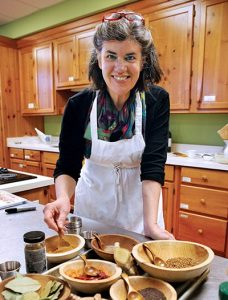 Nanette in the Cooking Studio[/caption]
CP: When does the holiday season begin for you?
ND: Well, I think about this off and on through out the year, planning simple projects for the winter holiday season and for spring's May Day and June's Auction Gala sometimes many months in advance. I have asked for help from other artists and dancers in the community to generate handmade decorations including giant puppets for parades. Jan and I love the seasonal celebrations that come from many rural, agricultural communities. When you live in the Appalachian countryside where there are distinct perennial landscapes, it's easy to celebrate the beauty of the changing seasons.
CP: What is your favorite Folk School December holiday tradition?
ND: We have so many great parties in December for the local community as well as our students who come in for a week. In the original days of the JCCFS, the student body was closely tied to the community and seasonal events were held to pull everyone together. We still want to include our local community and they are present here at weekly dances and concerts. We have the Old Folks Party, Christmas Dance/Dessert Potluck, New Year's Eve Dance, and the Children's Party when Santa arrives in the BFD Firetruck, sirens wailing. I have always helped with the Children's Party which includes crafts, musical chairs, storytelling, Morris performance, homemade cookies, and live music and dance for the kids. Even though we are an adult school we reach out to our local kids at Christmas and in the summer. More and more show up on the dance floor now. Every child that has a great folk school experience can help us preserve the school for the future.
Nanette in the Cooking Studio[/caption]
CP: When does the holiday season begin for you?
ND: Well, I think about this off and on through out the year, planning simple projects for the winter holiday season and for spring's May Day and June's Auction Gala sometimes many months in advance. I have asked for help from other artists and dancers in the community to generate handmade decorations including giant puppets for parades. Jan and I love the seasonal celebrations that come from many rural, agricultural communities. When you live in the Appalachian countryside where there are distinct perennial landscapes, it's easy to celebrate the beauty of the changing seasons.
CP: What is your favorite Folk School December holiday tradition?
ND: We have so many great parties in December for the local community as well as our students who come in for a week. In the original days of the JCCFS, the student body was closely tied to the community and seasonal events were held to pull everyone together. We still want to include our local community and they are present here at weekly dances and concerts. We have the Old Folks Party, Christmas Dance/Dessert Potluck, New Year's Eve Dance, and the Children's Party when Santa arrives in the BFD Firetruck, sirens wailing. I have always helped with the Children's Party which includes crafts, musical chairs, storytelling, Morris performance, homemade cookies, and live music and dance for the kids. Even though we are an adult school we reach out to our local kids at Christmas and in the summer. More and more show up on the dance floor now. Every child that has a great folk school experience can help us preserve the school for the future.




